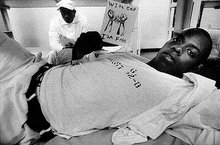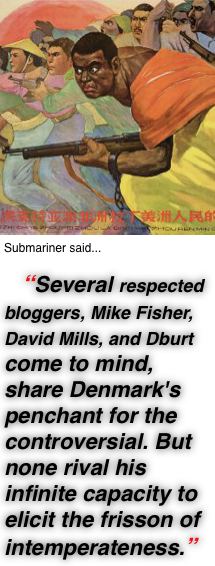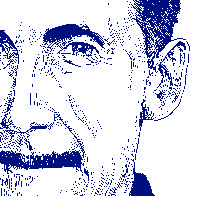By Gary Krasner & Barry Mesh
Plus Excerpt From, "Immunization: The Reality Behind The Myth", By Walene
James (1988)
PREFACE:
The following "heresy" about polio requires some explanation,
particularly since it was the "success" of the Salk vaccine that the NYS
legislature specifically cited as justification for the enactment of the
vaccination requirements for school (Legislative Findings of L.1966,
c.994, Section 1, effective 1/1/1967). These Historical Notes read, "One
of the truely great medical advances of this generation has been the
development of proved methods of reducing the incidence of poliomyelitis,
the once great crippler. Public health statistics show clearly that
immunization is at least 90% effective in preventing paralysis.
Immunization has been proven absolutely safe and there is no evidence or
indication that anyone has contracted paralytic polio from an
immunization dose." Not even the DoH would assert that last sentence
today, in the light of currently available evidence. Still, the purported
effectiveness of the vaccine is still "lore" today, and was the basis to
enact the "law" in NYS in the first instance.
These facts about the 1950's polio "epidemic" speak for themselves and-in
a perfect world-would be reason enough to rescind PHL �2164/5.
INTRODUCTION:
DAILY "EPIDEMICS"
To appreciate how epidemics can be "created", one has to understand the
degree of control that public health officials have throughout the entire
process.
Public health agencies have assumed wide discretion in announcing "public
health alerts". Such powers conferred upon the DoH to enforce that have
been notoriously abused by health authorities. The DoH has wide
discretion in calling "public health alerts". The CDC loosely defines an
"epidemic" as 2-3 confirmed cases in different areas. An "area" may be a
few city blocks, or an entire country. An "outbreak" is defined as at
least one case in one area. There is also a system called "epilink",
which suggests that if one person living in a household has a confirmed
case of a "communicable" disease, then there's no need to draw blood to
test anyone else with similar symptoms living in that same household.
Also, there's an over-reliance on incidence statistics rather than
mortality, to demonstrate vaccination effectiveness. However,
statisticians tell us that mortality statistics can be a better measure
of incidence than the incidence figures themselves, for the simple reason
that the quality of reporting and record-keeping is much higher on
fatalities. [Darrell Huff, How to Lie With Statistics, p. 84] In 1982,
Maryland state health officials blamed a epidemic on a television
program, "DPT:Vaccine Roulette", which warned of the risks from the DPT
vaccine. However, when Dr. J. Anthony Morris, former chief virologist for
the U.S. Division of Biological Standards, had analyzed the 41 cases,
only 5 were confirmed cases of pertussis, and all 5 had been vaccinated
against the disease. [Trevor Gunn, "Mass Immunization: A Point in
Question", p 15 (E.D. Hume, Pasteur Exposed-The False Foundations of
Modern Medicine, Bookreal, Australia, 1989.)]
Historically, public health officials have routinely increased disease
surveillance in areas of low vaccination acceptance as a retaliatory
response (a) against people who reject Modern Medicine's vaunted public
health tool, and (b) to justify predictions that outbreaks will occur
because of said rejection. Intensified surveillance for whooping cough in
Britain, Japan, and Sweden, for example, had followed steep declines in
pertussis vaccination rates in those countries.
Sometimes the increased disease surveillance is accompanied by a
relaxation of the case definition of the disease, and lowered criteria
required for its diagnosis. Subclinical and borderline cases are suddenly
classified as "severe". Suspected cases are permitted to be clinically
diagnosed without laboratory confirmation. After 1955, for example, polio
had "disappeared" following the Salk vaccine, only because thereafter
clinicians hung new and different names on the same polio-like symptoms.
In fact, it appears that it was the Salk vaccine itself that was the
"great crippler", and that paralysis would have disappeared sooner, had
we done without the vaccine.
The following 6 paragraphs are a summary of the article below about polio
epidemiology in the 1950s:
Polio was already declining in the U.S. and Europe during the 40's and
50's, as well as in England, where polio mortalities was at its height in
1950, but had declined 82 percent by 1956, before the Salk vaccinations
began there. There was also no polio epidemic in the Third-World, where
only 10 per cent of the population had been vaccinated. But the Public
Health Service and the March Of Dimes campaign swelled the statistics by
combining the larger numbers of non-paralytic, "unspecified" and
"abortive" polio cases, with the dwindling numbers of paralytic cases.
Almost two-thirds of this total comprised the milder, "non-paralytic"
type. In the minds of millions of people-then and now-polio had meant
paralysis. But by combining paralytic cases with the various milder,
non-paralytic forms, the public was misled into thinking that paralysis
was sweeping the land.
Paralysis started to rise only after the Salk vaccine had begun in April
1955. It proved to be so hazardous that by November 1955, all European
countries, with the exception of Denmark, had cancelled or discontinued
their Salk vaccine programs. Canada postponed its Salk vaccine program
July 29th of that year. In the U.S., Newark, N.J. stopped inoculations in
June, 1955, while Idaho and Utah took similar action in July, followed
shortly by Massachusetts [Morris Beale's American Capsule News, Oct.
15th, 1955]. By January 1, 1957, 17 states had rejected their supplies of
Salk polio vaccine. During that year, the NY Times reported that very
nearly half the paralytic cases, and three-quarters of the non-paralytic
cases in children between the ages of 5 and 14 years occurred in
vaccinated children. After two years of Salk vaccinations, paralytic
polio increased nationally about 50% from 1957 to 1958, and about 80%
from 1958 to 1959.
The attempt to hide the rise in paralysis occurred after 1955, when viral
analysis of coxsackie virus infection and septic meningitis made them
distinguishable from paralytic poliomyelitis. But if they had continued
to be counted together as a single "polio" disease, it would have showed
that paralytic polio increased nationally about 50% from 1957 to 1958,
and about 80% from 1958 to 1959-two years into the Salk vaccination
campaign. In addition to these two polio "twins", there were actually 170
other diseases with "polio-like" symptoms, with names like, spinal
meningitis, inhibitory palsy, epidemic cholera, cholera morbus, ergotism,
famine fever, billious remittent fever, spinal apoplexy, scurvy,
berri-berri, pellagra, acidosis, etc. Each were very likely classified as
"polio" during the frenzy prior to 1955.
After 1955, NON-paralytic polio also acquired a new name. It wasn't until
the mid-1950's that new laboratory techniques of culturing viruses could
distinguish THIS polio from its clinical twin, aseptic meningitis. Before
1960, not a single case of "aseptic meningitis" was reported. Then, it
was called (non-paralytic) "polio", and nationally had totaled 70,083
between 1951 and 1960. But from 1961 to 1992, there had been 220,365
cases of aseptic meningitis. There were only 589 cases of non-paralytic
polio from 1961 to 1982. Not a single case has been reported since.
Non-paralytic polio may have "disappeared". But thousands of children
still experience the same symptoms as non-paralytic polio every year.
Except now, it goes by another name.
Besides the name game, the (presumed) decline in polio due to the Salk
vaccine was also an artifact of diagnostic methodology. Prior to 1954,
the diagnosis of spinal paralytic poliomyelitis followed the World Health
Organization definition: "Signs and symptoms of nonparalytic polio, with
the addition of partial or complete paralysis of one or more muscle
groups, detected on two examinations at least 24 hours apart." But
beginning in 1955 following the introduction of the Salk vaccine, the
criteria changed to conform more closely to the definition used in the
(fraudulent) 1954 Salk field trials: "Unless there is residual
involvement (paralysis) at least 60 days after onset, a case of
poliomyelitis is not considered paralytic." Laboratory confirmation was
possible after 1955, but not required for diagnosis. Obviously, more
cases of paralysis had a chance to recover within 60 days, than in 24
hours. As intended, paralytic polio decreased by 23,500 cases from 1955
to 1957. However, after 2 years of widespread uptake of the Salk vaccine,
paralysis increased about 50% from 1957 to 1958, and about 80% from 1958
to 1959. (The Sabin oral vaccine supplanted Salk's by 1961.)
Finally, the PHS also redefined a "polio epidemic": Before the
introduction of the Salk vaccine, only 20 cases per 100,000 population
was an "epidemic". Afterwards, it required 35 per 100,000 per year.
Considering all these manipulations to endow efficacy upon the Salk
vaccine, to say that public health officials had, "moved the goal posts"
would be an understatement. They moved the stadium.
It is no different today. Most people would be surprised to learn that
there are more than one thousand outbreaks worldwide each year, including
colds, seasonal flus, hepatitus, and numerous noninfectious syndromes,
all running their course and disappearing, often despite remaining
unexplained by scientists. Even the dreaded Ebola epidemic failed to
materialize. The CDC claimed that 108 people may have been killed by the
Ebola in Zaire in 1995. However, there had been no further deaths and not
a single case has ever been reported in the U.S. or Europe. As historian
Elizabeth Etheridge wrote, "the epidemic was virtually over before their
work [CDC & WHO] began" (Sentinel for Health, 1992).
Considering the speed from exposure to death, the mortalities were more
likely the result of a chemical toxicological agent. A couple of other
indications point in that direction: Symptoms were never seen outside the
localized area where it began. And 20 per cent of the 55 million Zairens
are Ebola virus antibody-positive, having survived the virus without
apparent disease (Dietrich J.,1995). One guess is that those who became
sick had been exposed to the deadly cleaning solvents and oils that are
often left at military base camps-possibly from groundwater
contamination. Indeed, civil wars extending across 8 nations in central
Africa killed about 2.5 million African civilians between 1998 and 2001
alone.
If it were not for the gullible media and fanatical virus hunters seeking
fame and fortune, this virus would have joined the ranks of the thousands
of known harmless passenger viruses. According to renowned molecular
biologist Peter Duesberg, "these many outbreaks provide the CDC with its
inexhaustible source of epidemics" (Inventing The AIDS Virus, 1996).
In conclusion, such deceptions skew the correct picture of disease
prevalence. Too often, an apparent rise in cases of a disease is an
artifact of epidemiological methodology-and bias. State legislatures
cannot properly ascertain which vaccines to mandate based upon
information provided solely from health officials. Dissenters outside,
and from within the medical community must also be heard. Thus, given the
traditional abuse of this responsibility by health officials, it is
imprudent to continue to vest public health officials sole authority
during states of "public health alerts"-particularly when they're so
poorly defined and entail such a low threshold to demonstrate.
--------------------
MAIN ARTICLE:
POLIO: THE EPIDEMIC THAT NEVER WAS
--------------------
NOTE-As early as 1975, researcher Barry Mesh was perhaps the first to
assemble the complete polio story of the 1950's. He paints a starkly
different picture from the popularized legend of the Salk vaccine. This
essay extracts some of his account of the Salk vaccinations and the
1950's polio "epidemic". It's followed by the chapter on polio from
Walene James' book. Other articles in the separate Science Supplement
elaborates on this medical history, and other causes of paralytic
diseases.-Gary Krasner
WHAT IS POLIO?
Poliomyelitis is the inflammation of the gray matter of the spinal cord.
Its clinical symptoms are varied, and in most cases, oddly enough, do not
involve the spinal cord at all. Medical manuals report that most cases of
polio are of a minor nature, the symptoms, if any, being fever, malaise,
drowsiness, headache, nausea, vomiting, constipation, or sore throat in
various combinations. The disease may last from 2 to 10 days, with
recovery being rapid and complete. The more serious forms produce
stiffness and pain in the back and neck and occasionally paralysis of
some parts of the body, usually temporary. Death does occur, but
infrequently.
WHAT IS THE CAUSE OF POLIO?
Conventional medicine believes that polio is caused by a microbiological
agent-poliovirus-for which a vaccine would be an appropriate preventative
of the disease. Yet the viral mechanism to account for paralytic polio
has yet to be established. (Similarly, the chemical mechanism for most
viral diseases, including small pox, have yet to be described.) While
scientists can isolate the virus from tissue, and believe they know which
part of the virus is responsible for attacking the nervous system,
virologist Jonathan Weber, senior lecturer at the Royal Postgraduate
Medical School in London-in an essay arguing that HIV is the cause of
AIDS-wrote in the New Scientist (May 5th, 1988, page 32) that, ".the
relationship between the virus and paralytic polio is still [merely] an
epidemiological association; the majority of infections with polio virus
do not lead to paralysis, the clinical manifestation of the illness."
Indeed, that may be an understatement. Boyd's Textbook of Pathology (8th
Edition, 1984) states, "90-95% poliovirus infections are
inapparent"-which means the virus doesn't produce any symptoms of disease
in almost all people who are infected with poliovirus. Among the 5-10%
who do exhibit symptoms, the virus causes "a mild disease of headache,
nausea, and fever. A few cases progress to aseptic meningitis, consisting
of pains in the back and neck, ending in rapid and complete recovery. In
less than 2% of total cases, poliovirus infection causes flaccid
paralysis, frequently with.loss of muscle enervation, which may be
prolonged and is often irreversible." Nevertheless, according to Muir's
Textbook of Pathology, 9th Edition, 1972, polio cases WITHOUT paralysis
are about 20 times as common as paralytic cases. And that, "such cases
are difficult or impossible to recognize on clinical grounds alone, since
they simulate minor gastrointestinal or respiratory infections from other
causes"-not unlike a severe cold. One wonders now, how polio could have
struck terror in people a half century ago. As it turned out, a public
relations campaign can take credit for that.
Some believe that gene fragments (viruses) that have been associated with
polio and all its clinical twins may be mere happenstance, or at best
serological markers, possibly from the putrefaction of proteins in the
blood, which is more likely responsible for the various forms of the
disease. Other non-viral contributing factors that have been suggested
range from vitamin and mineral deficiency, to toxicological, to factors
that hinder our capacity to manage toxins and metabolic waste-such as
tonsillectomies-as was suggested by Boyd's Textbook. While there are
currently "only" a couple of hundred thousand tonsillectomies performed
annually, the operation had peaked to 2 million during the 1930s and
40s-the same years that paralytic polio began to develop in significant
numbers.
Another cause of paralysis that displaces the poliovirus theory may be
pesticides. A great deal of evidence for this displayed on Jim West's
(harpub@hotmail.com) website, www.bcity.com/harpub. Raeto West's incisive
commentary regarding this polio site may be found at:
www.2.prestel.co.uk/littleton/index.htm
The bottom line for the reader to understand is that correlation does not
prove cause. The presence of viruses, viroids or fragmented genes may
merely be coincidental, or a derivative of the underlying condition. As
renowned virologist Peter Dueberg described in "Infectious AIDS: Have We
Been Misled" (1995, North Atlantic Books, p.330), dozens of diseases
previously thought to be microbial were later shown to be toxilogical or
nutritional.
WHAT IS THE CAUSE OF POLIO OR PARALYSIS?
While conventional medicine has yet to suggest a direct viral mechanism
for polio, there are plausible toxicological mechanisms. One
toxicological mechanism of various paralytic diseases may be manifested
by vaccination itself. In addition to highly antigenic (toxic) proteins
and foreign viral particles, vaccines contain extremely poisonous
preservatives, adjuvants, neutralizers, carrying agents and extracting
agents, such as thimerosal (a mercury derivative), benzethonium chloride,
methyl paraben, phenol red, pyridene, ethanol, ethylene chlorophyrin,
aluminum hydroxide, aluminum hydrochloride, sodium hydroxide, aluminum
sulfate, aluminum potassium sulfate, sorbitol, hydrolized gelatin,
carbonic acid, thiosalicylic acid, and formaldehyde (in the form of
formalin).
None of these chemicals are indigenous to the body, yet they're injected
directly into the bloodstreams of two, four, and six month old
infants-whose immune systems are not fully developed-bypassing important
mucosal immune system barriers, as well as the liver, whose purpose it is
to filter poisons before it gets into the blood. The medical literature
and toxicology textbooks rank these chemicals as highly toxic poisons and
potent carcinogens. The other component in vaccines-foreign proteins-can
act as allergens, in which the most acute reaction may be anaphylactic
shock, possibly leading to convulsions and death within minutes.
Injected proteins are also the likeliest suspects in causing paralytic
symptoms. In the absence of digestive juices in the blood, these proteins
decompose (putrefy) yielding extremely poisonous endotoxins, like
ptomaines, creatins, xanthins, purines, indoles, skatols, phenols,
leucomaines, uric acids, and indoxyl-sulphuric acids. These toxins are
often eliminated (removed from the blood) vicariously through the mucous
membranes or by diffusion into the spinal fluid. In the former, this
irritating excretion causes an inflammation attended by mild fever,
malaise, perhaps slight stiffness in the neck, with recovery in a few
days for most children. In the latter case, if the child is already in a
toxic state, with subnormal adrenal glands, the toxins build up in the
mucous membranes of the sinuses. As the membranes of the brain are in
close proximity, it is a simple matter for these fluids to penetrate
brain tissue and the spinal cord. Stiffness and paralysis follows from
that.
Whether it's from injected chemicals or protein toxins, if the cause of
paralysis is indeed toxicological rather than microbial, we can expect to
see examples of dose-dependent relationships that are characteristic of
the former. And in fact there is a dietary link that conforms to this
mechanism that may account for the generally milder forms of the disease
(e.g. non-permanent weakness and stiffness of the muscles in the limbs).
This diet may involve toxemia caused by the residue of "acid-type foods",
compounded by foods containing refined sugar that adversely affects
calcium and bone metablolism:
The end products of digestion are either acid or alkaline, depending upon
the kind of food eaten. Meat, eggs, pasteurized milk and dairy products,
breads, cereals, refined foods and most cooked foods are decidedly acid
in reaction, producing great excesses of phosphorous, sulfur and
chlorine. Raw fruits and vegetables provide the alkaline mineral salts
(calcium, magnesium, iron, etc.). An alkaline blood and lymph is
necessary to life and health, since the cells of the body are bathed in
alkaline fluids. The body uses its alkaline mineral salts to neutralize
acids, and if these acids are allowed to accumulate excessively, the
alkaline minerals will be leeched from the tissues to serve this
function. Calcium, being the most abundant and readily available alkaline
mineral (bones, teeth, etc.), is sacrificed in this way. Pasteurized
milk, being extremely acid-forming in reaction (as opposed to raw milk,
which is alkaline), necessitates the withdrawal of calcium from the body.
In fact, all acid-forming foods require neutralizing, and thus cause a
depletion of the body's alkaline reserve. In short, humans require an
alkaline-forming diet for health. An acid-forming diet causes disease.
There is evidence to show that in all cases of polio, there is a
deficiency in blood calcium. What lowers blood calcium? Acid-forming
foods (practically everything except raw fruits and vegetables) and
refined sugar in any form-ice cream, cola drinks, cakes and pies,
ketchup, white flour, malteds, ices, etc., all steal calcium from the
body. Refined sugar is converted (decomposes via fermentation) into
alcohol almost immediately after it is taken into the body and does the
same damage that alcohol does. It dehydrates the cells and leeches
calcium from the nerves, muscles, bones, teeth, and all other tissues
that are supplied with calcium. Refined sugar is absorbed into the blood
almost immediately, causing the blood sugar level to rise, thus producing
more and more carbonic acid. Carbonic acid has a chemical affinity
(attraction) for minerals, especially calcium, which it dissolves from
the teeth and bony structures. The bloodstream, acidified by sugar
consumption, has a corrosive action on the minerals of the teeth. It is
calcium particularly, which is dissolved and a serious calcium deficiency
is a forerunner to polio.
For example, consider ice cream consumption by children. Unlike meat, ice
cream-containing huge amounts of protein and sugar-may be consumed in
prodigious amounts. It is also cold, and therefore in a state that is
difficult to digest. What does not digest will decompose, leading to the
poisoning mechanism described earlier. The rise of polio (known as the
"summertime disease") and its symptomatic twins can be traced to the
widespread introduction of refrigeration and the increased consumption of
ice cream and other concentrated protein foods. In fact, the well-known
piercing pain-known as "brain freeze"-that many people feel behind their
nose, eyes, or temples right after eating ice cream may be explained by
protein toxins building up in the mucous membranes of the sinuses,
described earlier.
A campaign to restrict ice cream and sugar consumption-instituted in 1948
by Dr. Benjamin P. Sandler, a medical doctor and nutrition expert at the
Oteen Veteran's Hospital, N.C-had lead to drastic declines in the
incidence of polio. In just one year the number of polio cases dropped
90%. The North Carolina State Board of Health reported 2,498 cases of
polio in the Tarheel Commonwealth during 1948. In 1949-after that
campaign began-that figure dropped to 229 (with no polio vaccine
available yet). Dr. Sandler's researches showed specifically that the
modern tendency to consume excessive amounts of cola and fountain drinks
and frozen foods in hot weather, loaded with refined sugar, was
responsible for the rise in polio cases. The phosphoric acid in soda
absorbs the phosphorus and sulfates in the foods we eat before they
metabolize. The nerves are thus deprived of the necessary phosphorus and
sulfate, and certain nerve trunks cease to function. The victim loses the
use of one of more limbs.
This non-viral mechanism seems to confirm the epidemiology of this
disease-one which generally affected affluent societies during the summer
months. (In "The Mysteries Within", author Sherman B. Nuland accurately
conveyed what was observed at the time-that polio was a middle-to-upper
class disease.) First, more frozen deserts and sweeted beverages are
consumed during the summer months. Second, the affluent could better
afford to avail their children with the services of physicians, and being
better educated as well, would be more inclined to make sure that their
children were fully immunized with the recommended (by 1944) doses each
of diphtheria and pertussis vaccines. The pertussis vaccine being the
most notoriously associated with adverse neurological injuries. (The
combined DPT vaccine was introduced after 1947, with the pertussis
component still inducing the most damages.) Contracting polio by swimming
in dirty ponds was obviously a whimsical notion for the virus hunters-one
whose only virtue was that it supported their virus theory.
WHEN PARALYSIS FOLLOWS VACCINATION CAMPAIGNS
Neurological effects are the most commonly known reactions that follow
vaccinations. In nearly 20% of VAERS reports, the first of eight listed
side effects suggests central nervous system involvement. Examining the
first listed effects shows about 4,600 involving such symptoms as
prolonged screaming, agitation, apnea, ataxia, visual disturbances,
convulsions, tremors, twitches, an abnormal cry, hypotonia, hypertonia,
abnormal sensations, stupor, somnolence, neck rigidity, paralysis,
confusion, and oculogyric crisis. The last is a striking feature of
post-encephalitic Parkinson's disease, or it may occur as a dystonic
reaction to certain drugs such as phenothiazines. The CDC admits that the
results of ongoing studies on a potential association of hepatitis B
vaccine and demyelinating diseases such as multiple sclerosis are not yet
available.
Let's test the non-viral mechanism further. As mentioned, toxicological
diseases are dose-dependent: The more toxins there are, the more disease.
Polio is an "endemic" disease-habitually appearing in limited and
consistent numbers in all parts of the world. But when epidemics have
appeared, they were usually preceded by toxicological assaults that could
account for them. One type of assault has been vaccination. Encephalitis
and paralysis has been established clinical "side effects" of
vaccination. And parents of children with these neurological injuries
typically report that the more severe and permanent symptoms occurred
after followup vaccinations and boosters-often after the physician
assured the parent that the reactions from the initial vaccines were
"harmless" and "normal". In other words, injuries increase in severity
and type following additional vaccinations, which is the hallmark of the
dose-dependent relationship of chemical toxins.
Epidemiological evidence suggests that a common cause of polio epidemics
has often been vaccination itself. Paralytic disease has been recorded
hundreds of years ago. But epidemic numbers hadn't appeared until the
latter part of the 19th century when compulsory smallpox vaccination was
instituted. A major outbreak of infantile paralysis followed a diphtheria
toxin-antitoxin vaccination campaign in the United States in 1916. Worst
hit was New York City, where 9023 cases were reported with 2448 deaths
("Breakthrough: The Saga of Jonas Salk", by P. Carter). Pertussis and
typhoid vaccination campaigns had also been implicated in outbreaks:
Polio cases began to soar in 1948-9 when pertussis vaccine began. In
1976, of the 46 million Americans that were vaccinated with Swine Flu
vaccine, two thirds experienced adverse reactions, with thousands that
were either killed, paralyzed, or injured neurologically with
Guillain-Barr� Syndrome. (Uncle Sam payed out damage claims totalling
almost $4 billion from this debacle.) GBS is reported today as a reaction
following vaccination. But passive reporting systems makes it hard to
determine its prevalence, plus paralysis may be misdiagnosed or
mis-classified as other conditions.
A report on Vaccination and Immunization, published by The Howey
Foundation, Surrey, England (which takes an impartial look at all
vaccination procedures) stated flatly: "It is now accepted that paralytic
poliomyelitis was precipitated by diphtheria vaccines and
tonsillectomies, and other vaccines have also been implicated. This
almost certainly accounts for the sudden upsurge between 1940 and 1950 of
what had been a declining disease . . . Since the introduction of
poliomyelitis vaccine there have been many cases of poliomyelitis in
fully vaccinated persons and instances of the vaccine actually lending to
the disease."
THE POLIO "CAMPAIGN"
Yet the vaccine that had caused that greatest numbers of paralytic cases,
ironically, was the vaccine intended to end paralysis forever. Publicity
for polio received a boost in 1938 when President Franklin D. Roosevelt
established the National Foundation for Infantile Paralysis (NFIP), and
placed his friend, Basil O'Conner in charge of it. O'Conner was
considered one of the greatest publicists of his time.
In the late 1940' and early 1950's, he inundated the world with reports
of raging polio epidemics. The National Foundation mounted a continuous
publicity campaign which reached the entire country with such reminders
as the sight of paralyzed victims on crutches, or with names such as the
"iron lung," the device used to help "bulbar" cases of polio (paralyzed
chest muscles) to breathe. The word polio took on extraordinary emotional
connotations, and the Foundation's annual March of Dimes became a
fantastically successful fund-raising operation.
In 1952 Jonas Salk stepped into the spotlight. At that time, Salk was a
research professor at the University of Pittsburgh and had been enlisted
by Basil O'Connor into the National Foundation's polio research program.
Salk did not offer a cure for polio. He sought a preventative-a vaccine
which he tested on a small scale in 1952 and 1953.
1955: SALK VACCINATION BEGINS
Salk vaccinations began in the U.S. in April 1955. Only two months into
the Salk campaign, the U.S. Public Health Service, on June 23, 1955,
announced that there had been 168 confirmed cases of poliomyelitis among
the vaccinated with six deaths. The News Chronicle of May 6, 1955,
reported:
"The interval between the inoculation and the first sign of paralysis
ranged from 5 to 20 days and in a large proportion of cases it started in
the limb on which the injection had been given. Another feature of the
tragedy was that the numbers developing polio were far greater than would
have been expected had no inoculations been given. In fact, in the state
of Idaho, according to a statement by Dr. Carl Eklund, one of the
government's chief virus authorities, polio struck only vaccinated
children in areas where there had been no cases of polio since the
preceding autumn; in 9 out of 10 cases the paralysis occurred in the arms
in which the vaccine had been injected."
In June, 1955, James C. Spaulding, a staff writer for the Milwaukee
Journal covered an American Medical Association convention. Here is what
Spaulding learned and reported on June 19, 1955:
"A policy of secrecy and deception has been followed by the National
Foundation for Infantile Paralysis and the U.S. Public Health Service in
the polio vaccine programs. As a result the nation's physicians were
prevented from learning vital information about the trouble in making and
testing Salk vaccine. The secrecy and deception started before the field
trials."
"One of the things the AMA was not told was that the USPHS had an
advisory group made up almost entirely of scientists who were receiving
money from the National Foundation for Infantile Paralysis, which body
was exerting pressure to go ahead with the program, even after Salk
vaccine was found to be dangerous."
"In May, some state public health officers met in Atlanta, expecting to
be told what had gone wrong with the vaccine program. Instead, the USPHS
scientist said he was not permitted to disclose what had happened because
it would jeopardize the investment of the pharmaceutical firms in the
vaccine program."
Suppressed reports condemning the Salk vaccine by technicians at the
National Institutes of Health, was reported in, The Drug Story by Morris
Bealle. Among the stories carried in this book is the one that James A.
Shannon, M.D., of the National Institutes of Health in Washington, D.C.,
knew about the reports from the Institute's technicians in 1955, that
"Salk vaccine was a killer and totally ineffective as a preventative." As
a result of these reports of the Institutes Technicians, no official of
the NIH would permit the vaccination of their own children with the Salk
vaccine. Word of this leaked out when Robert S. Allen, Washington
correspondent, reported in the New York Post, June 8, 1955, that "Doctors
and others on the staff of the National Institute of Health are not
inoculating their own children with the Salk Vaccine." "Nevertheless,"
says Mr. Bealle, "on orders from higher-ups in the U.S. Public Health
Service, they kept quiet and let hundreds of unfortunate children be
killed and thousands maimed for life."
By contrast, the editor of "The Lancet" (June 11, 1955) wrote: "In
addition to the possibility of producing the very disease the vaccine is
used to prevent, there is a risk, of unknown dimensions, that repeated
injections of a vaccine prepared from monkey kidney may eventually
sensitize the child in some harmful way."
In July, 1955, Dr. Graham S. Wilson, Director of the Public Laboratory
Service of England and Wales (and also Honorary Lecturer in the
Department of Bacteriology at the London School of Hygiene and Tropical
Medicine), who knew about the secret field trials conducted by the NIH,
announced, "I do not see how any vaccine prepared by Salk's method can be
guaranteed safe." (American Capsule News, January 21, 1956). In 1967, Sir
Graham S. Wilson, M.D., LL.D., F.R.C.P., D.P.H., published one of the
most scathing indictments of vaccination: "The Hazards of Imminizations"
(Univ. of London, The Athlone Press. 324 pages.)
PARALYSIS INCREASED FOLLOWING THE SALK VACCINE
An Associated Press Dispatch from Boston on August 30, 1955, reported
2,027 cases of polio in Massachusetts against 273 the same time the
previous year-representing an increase of 743%. This followed the
inoculation of 130,000 Massachusetts children, and the authorities banned
the vaccine. Connecticut reported 276 cases in 1955, up from 144 in 1954;
Vermont, 55 up from 15; Rhode Island, 122 up from 22, and Maine, 74 up
from 43.
The Washington D.C. Star, September 20, 1955, reported 180 cases in
Washington against 136 the same time in 1954; Maryland's Health
Department reported 189 in 1955 to 134 in 1954; New York State, 764 to
469; Wisconsin, 1655 to 326. The Milwaukee Journal, on August 30, 1955,
reported that the city's schools closed indefinitely because of the polio
outbreak, following inoculation with the Salk vaccine.
Idaho stopped Salk inoculations completely on July 1, 1955, with this
blast from State Health Director Peterson said, "I hold Salk vaccine and
its manufacturers responsible for a polio outbreak that has killed 7
Idahoans and hospitalized 79." By September 14th 1955, that state had 190
cases compared with 132 for the entire year of 1954. Newark, N.J. stopped
inoculations in June, 1955, while Utah took similar action on July 12.
An Associated Press dispatch on November 11, 1955, quoted Dr. Herbert
Ratner, Health Commissioner of Oak Park, Illinois, who said that "English
authorities in July, 1955, canceled the Salk vaccine programs as 'too
dangerous', and all European countries, with the exception of Denmark,
have discontinued their programs." Canada also postponed its Salk vaccine
program on July 29, 1955.
The New York Times on May 11, 1956, reported on Supplement No. 15 of the
Poliomyelitis Surveillance Report for the year which showed 12% more
paralysis in 1956 than in 1955. By January 1, 1957, 17 states had
rejected their supplies of Jonas Salk's "anti-paralytic" polio vaccine.
During this year very nearly half the paralytic cases and three-quarters
of the non-paralytic cases in children between the ages of 5 and 14 years
occurred in "vaccinated" children.
The Expert Committee on Poliomyelitis of the World Health Organization
stated in its Technical Report Series, No. 145 (Second Report, p. 34
Geneva, 1958) that:
"It was noted in the Union of South Africa and in the USA, especially in
the course of severe outbreaks in Hawaii and Chicago, that vaccination in
the face of an epidemic did not appear to shorten its course. Laboratory
and field studies have shown that vaccination does not prevent infection
or interfere with dissemination of virus in the community."
Hawaii had an outbreak of polio in 1958. The Honolulu Advertiser on July
15, 1958, carried a statement by Dr. Enright of the Territorial Dept. of
Health which broke down the figures as follows: "Of the 32 discovered
paralytic polio cases so far this year, six had 3 Salk shots, six had 2
shots, four had one shot, the rest, none." Percentage vaccinated: 50%.
The Chicago Daily News, May 28, 1959, printed the following UPI dispatch
from Duluth, MN-"One of the developers of the new oral (polio) vaccine
said Wednesday the recent use of Salk vaccine in Israel had 'little if
any effect.' Dr. Herald R. Cox of Lederle Laboratories,.suggested the
ineffectiveness of Salk inoculations during a round table discussion at
the Minnesota State Medical Association convention. Cox said a
confidential report on a polio epidemic showed 90% of children under six
years old in Israel were given Salk shots. But the outbreak became
epidemic. It is evident that the vaccine failed," Cox said.
Polio cases rose about 300 to 400% in these 5 places that made the Salk
vaccine compulsory by law:
-North Carolina: 78 cases in 1958 before compulsory shots. 313 cases in
1959.
-Connecticut: 45 cases in 1958 before compulsory shots. 123 cases in
1959.
-Tennessee: 119 cases in 1958 before compulsory shots. 386 cases in 1959.
-Ohio: 17 cases in 1958 before compulsory shots. 52 cases in 1959.
-Los Angeles: 89 cases in 1958 before compulsory shots. 190 cases in
1959.
By 1960, the Salk vaccine had proven to be so hazardous and ineffective,
that the Journal of the American Medical Association (February 25, 1961)
carried an article admitting that, "It is now generally recognized that
much of the Salk vaccine used in the U.S. has been worthless."
In his statement submitted to the House of Representatives Sub-Committee
on Health and Environment, 94th Congress, Dr. Thomas E. Baynes (Assistant
Professor of Law at Nova University Law Center, Fort Lauderdale, FL,
under a contract with HEW, CDC, No. 39204) reported to our elected
officials that:
". In 1949, a polio vaccine was only a dream.now that dream has turned
into a nightmare. The extent of litigation from vaccine injuries in
humans had been minimal until the advent of the Salk and Sabin
vaccines.Resultant litigation from vaccine injuries will require a
reevaluation of current efforts to immunize vast numbers of people from
communicable diseases."
WAS THERE REALLY A POLIO EPIDEMIC?
Contrary to popular mythology, it's clear from these reports that the
Salk vaccine had been a disaster. The next question is whether there had
actually been a polio epidemic in the 1950s? To determine that question,
several issues have to be examined.
First, was polio increasing or decreasing going into that decade? Perhaps
because of the effectiveness of the PR campaign then-and the lingering
mythology today-most people didn't know that paralytic polio was
substantially declining before the vaccine had been used, with a drop of
almost 20,000 cases between 1952 and 1954, for example. This was also
true in England, where polio mortalities was at its height in 1950, but
had declined 82 percent by 1956 before the Salk vaccinations began there.
But despite this actual decline of paralytic polio, the polio PR campaign
cited for 1952, for example, that polio had peaked at 57,879 cases. This
disparity was due to statistical "flim-flam": they swelled the statistics
by combining the larger numbers of non-paralytic, "unspecified" and
"abortive" polio cases with the dwindling numbers of paralytic cases.
Almost two-thirds of this total were among the former-"non-paralytic"
polio-a mild expression of symptoms no more serious than a bad cold. In
the minds of millions of people-then and now-polio had meant "paralysis".
But by combining paralytic cases with the various milder, non-paralytic
forms, the public was misled into thinking that paralysis was sweeping
the land.
Thus, before the Salk vaccine began in 1955, cases that described a wide
spectrum of symptoms of the disease were combined under one name: polio.
That made it look like there was an epidemic. But after the vaccine was
introduced, the reverse procedure was required to "demonstrate" that
there were fewer cases and that the vaccine was successful. That
procedure was to fractionate all those cases into several smaller
classifications.
This method of "hiding" paralytic cases under names other than "polio"
was discussed in 1960, during a panel discussion on "The Present Status
of Polio Vaccine" (reported in the Aug.&Sept./1960 issues of the Illinois
Medical Journal). One of the speakers at this panel discussion was Dr.
Bernard G. Greenberg, Ph.D., head of the Department of Biostatistics of
the University of North Carolina School of Public Health, and former
Chairman of the Commission of Evaluation and Standards of the American
Public Health Association. Greenberg pointed out that after 1955,
"Coxsackie virus infection and septic meningitis (polio "twins") have
been distinguished from paralytic poliomyelitis. Prior to 1954, large
numbers of these cases undoubtedly were mislabeled as paralytic polio."
Dr. Greenberg mentioned only two polio twins. But Dr. Ralph R. Scobey,
President of the Poliomyelitis Research Institute, Syracuse, N.Y., in the
Archives of Pediatrics, January, 1950, listed 170 diseases of
"polio-like" symptoms and effects but with different names such as
"spinal meningitis, inhibitory palsy, epidemic cholera, cholera morbus,
ergotism, famine fever, billious remittent fever, spinal apoplexy,
scurvy, berri-berri, pellagra, acidosis, etc." In fact, symptoms from
nutritional and toxicological factors overlap much of the "various forms"
of polio.
Ernest B. Zeisler, M.D., in his article, "The Great Salk Vaccine Fiasco,"
(Herald of Health, December, 1960) pointed out that there are over a
dozen illnesses that are identical to paralytic polio. In addition, he
presents a clear picture of medical guesswork that renders all polio
statistics wholly unworthy of confidence:
"No attempt was made to eliminate personal bias in making the diagnosis
of poliomyelitis. There are more than a dozen illnesses due to viruses
other than those of poliomyelitis, which may be 'indistinguishable from
paralytic polio' except by special virus studies. A physician seeing a
patient with such paralytic illness at once inquires whether or not the
patient has been vaccinated with the Salk vaccine, and his diagnosis is
very likely to be influenced by his reply. Inasmuch as physicians have
been convinced that triple vaccination is highly effective, they will
make a diagnosis of poliomyelitis if there is no history of vaccination
and will make a diagnosis of one of the other diseases if there is a
history of triple vaccination."
"Paralytic polio" seemed well buried with the additional classifications.
After 1955, non-paralytic polio also acquired a new name. It wasn't until
the mid-1950's that new laboratory techniques of culturing viruses could
distinguish polio from its clinical twins (i.e. aseptic meningitis,
etc.). Since the Salk vaccine had begun to be used in 1955, the huge
swing from the incidence of polio to aseptic meningitis following that
year indicated that (1) prior to the vaccine, clinicians had been
over-diagnosing poliomyelitis in most instances when they had really been
cases of aseptic meningitis, or just cases involving a bad cold, and (2)
the apparent decline in polio due to the Salk vaccine was merely an
artifact of diagnostic methodology (more of which is described below).
That was the conclusion of Michael B. Gregg, M.D., Deputy Director,
Bureau of Epidemiology of the CDC, from personal correspondence to Barry
Mesh, dated 11/23/77 (copy of signed letter available upon request).
Statistics bear out the above item (2): Non-paralytic polio diagnosis was
based on subjective clinical observation, not laboratory confirmation.
Doctors diagnosed 70,083 cases of non-paralytic polio between 1951 and
1960. They simply called it "polio" for the popular press. And during
this time, not one case of "aseptic meningitis" was reported. After 1960,
"aseptic meningitis" began to displace "non-paralytic polio".
Non-paralytic polio became so rare that the MMWR stopped reporting it in
1983. What had been a (non-paralytic) polio epidemic before, is now an
aseptic meningitis epidemic. These numbers were compiled from national
surveillance reports from the MMWR for the years indicated:
Date Non-Paralytic Polio Aseptic Meningitis
1951-1960 70,083 0
1961-1982 589 102,999
1983-1992 0 117,366
Non-paralytic polio may have "disappeared". But thousands of children
still experience the same symptoms as non-paralytic polio every year. It
just goes by another name now.
At the aforementioned panel discussion in 1960, Dr. Greenberg also blew
the whistle on the modified diagnostic criteria for polio. Prior to 1954,
the diagnosis of spinal paralytic poliomyelitis in most health
departments followed the World Health Organization definition: "Signs and
symptoms of nonparalytic polio with the addition of partial or complete
paralysis of one or more muscle groups, detected on two examinations at
least 24 hours apart." But beginning in 1955, the criteria changed to
conform more closely to the definition used in the 1954 Salk field
trials: "Unless there is residual involvement (paralysis) at least 60
days after onset, a case of poliomyelitis is not considered paralytic."
Obviously, more cases of paralysis had a chance to recover within 60
days, than in 24 hours. During the panel discussion, Dr. Greenberg
commented, "This change in definition meant that in 1955 we started
reporting a 'new' disease, namely, paralytic polio with a longer lasting
paralysis [than what was required before 1955]. As a result of these
changes in both diagnosis and diagnostic methods, the rates of polio
plummeted from the early 1950's to a low in 1957." (a decrease of 23,500
cases from 1955 to 57.)
However, Dr. Greenberg pointed out that not even this artifactual
"decline" could continue, after the Salk vaccine had been used widespread
use for 2 years. He showed that nationally, paralytic polio increased
about 50% from 1957 to 1958, and about 80% from 1958 to 1959.
Polio had indeed been wiped out. But in name only.
--END--
POSTSCRIPT #1:
Walene James had explained the so-called polio epidemic further:
Excerpt From, "Immunization: The Reality Behind The Myth", By Walene
James (�1988), page 26, under the section, "Polio":
The case of poliomyelitis is particularly instructive since its apparent
decrease cannot be explained by such developments as sanitation, public
water supplies, ventilation, etc. In fact, it is a disease that occurs
only among the most civilized peoples with the highest standards of
sanitation, etc., being unknown among preliterate cultures that have been
relatively untouched by civilization.
Jonas Salk, the discoverer of the Salk polio vaccine, has been called the
"twentieth-century miraclemaker" and the savior of countless lives. (W6)
We read glowing reports of the dramatic decrease in poliomyelitis in the
United States as a result of the Salk vaccine. For instance, the Virginia
State Department of Health distributes a folder which tells us that polio
vaccines have reduced the incidence of polio in the United States from
18,000 cases of paralytic polio in 1954 to fewer that 20 in 1973-78. A
recent article in Modern Maturity states that in 1953, there were 15,600
cases of paralytic polio in the United States; by 1957, due to the Salk
vaccine, the number had dropped to 2,499. (W7)
During the 1962 Congressional Hearings on HR 10541, Dr. Bernard
Greenberg, head of the Department of Biostatistics of the University of
North Carolina School of Public Health, testified that not only did polio
increase substantially (50 percent from 1957 to 1958 and 80 percent from
1958 to 1959) after the introduction of mass and frequently compulsory
immunization programs, but statistics were manipulated and statements
made by the Public Health Service to give the opposite impression. (W8)
For instance, in 1957 a spokesman for the North Carolina Health
Department made glowing claims for the efficacy of the Salk vaccine,
showing how polio steadily decreased from 1953 to 1957. His figures were
challenged by Dr. Fred Klenner who pointed out that it wasn't until 1955
that a single person in the state received a polio vaccine injection.
Even then injections were administered on a very limited basis because of
the number of polio cases resulting from the vaccine. It wasn't until
1956 "that polio vaccinations assumed 'inspiring' proportions." The 61
percent drop in polio cases in 1954 was credited to the Salk vaccine when
it wasn't even in the state! By 1957 polio was on the increase. (W9)
Other ways polio statistics were manipulated to give the impression of
the effectiveness of the Salk vaccine were: (1) Redefinition of an
epidemic: More cases were required to refer to polio as epidemic after
the introduction of the Salk vaccine (from 20 per 100,000 to 35 per
100,000 per year). (2) Redefinition of the disease: In order to qualify
for classification as paralytic poliomyelitis, the patient had to exhibit
paralytic symptoms for at least 60 days after the onset of the disease.
Prior to 1954 the patient had to exhibit paralytic symptoms for only 24
hours! Laboratory confirmation and the presence of residual paralysis
were not required. After 1954 residual paralysis was determined 10 to 20
days and again 50 to 70 days after the onset of the disease. Dr.
Greenberg said that "this change in definition meant that in 1955 we
started reporting a new disease, namely, paralytic poliomyelitis with a
longer lasting paralysis." (3) Mislabeling: After the introduction of the
Salk Vaccine, "Cocksackie virus and aseptic meningitis have been
distinguished from paralytic poliomyelitis," explained Dr. Greenberg.
"Prior to 1954 large numbers of these cases undoubtedly were mislabeled
as paralytic polio." (W10)
Another way of reducing the incidence of disease by way of semantics-or
statistical artifact, as Dr. Greenberg calls it-is simply to reclassify
the disease. From the Los Angeles County Health Index: Morbidity and
Mortality, Reportable Diseases, we read the following:
Viral Meningitis or
Date Aseptic Meningitis
Polio
July 1955 50 273
July 1961 161 65
July 1963 151 31
Sept.1966 256 5
The reason for this remarkable change is stated in this same publication:
"Most cases reported prior to July 1, 1958, as non-paralytic
poliomyelitis are now reported as viral or aseptic meningitis." (W11) In
Organic Consumer Report (March 11, 1975) we read, "In a California Report
of Communicable Diseases, polio showed a zero count, while an
accompanying asterisk explained, "All such cases now reported as
meningitis."
There have been at least three major polio epidemics in the United
States, according to Dr. Christopher Kent. "One occurred in the teens,
another in the late thirties, and the most recent in the fifties." The
first two epidemics simply went away like the old epidemics of plague.
Around 1948, the incidence of polio began to soar. (Interestingly, this
is when pertussis-whooping cough-vaccine appeared, Dr. Kent points out.)
It reached a high in 1949, with 43,000 cases, but by 1951 had dropped to
below 28,000. In 1952, when a government subsidized study of polio
vaccine began, the rate soared to an all-time high of well over 55,000
cases. After the study, the number of cases dropped again and continued
to decline as they had in the previous epidemics. "This time, however,
the vaccine took the credit instead of nature." (W12)
The cyclical nature of polio is again illustrated by the remarks of Dr.
Alec Burton at the 1978 meeting of the Natural Hygiene Society in
Milwaukee, Wisconsin. Some years ago at the University of New South Wales
in Australia, statistics were compiled which showed that the polio
vaccine in use at the time had no influence whatsoever on the polio
epidemic. Polio comes in cycles anyway, Dr. Burton said, and when it has
been "conquered" by vaccines, and a disease with identical symptoms
continues to appear, doctors look for a new virus because they know the
old one has been "wiped out." "And the game goes on," he added. (W13)
When Dr. Robert Mendelsohn was asked about the possibility of childhood
diseases-particularly polio-returning if the vaccinations were stopped,
he replied: "Doctors admit that forty percent of our population is not
immunized against polio. So where is polio? Diseases are like fashions;
they come and go, like the flu epidemic of 1918." (W14)
On a 1983 Donahue Show ("Dangers of Childhood Immunizations," Jan.12),
Dr. Mendelsohn pointed out that polio disappeared in Europe during the
1940s and 1950s without mass vaccination, and that polio does not occur
in the Third World where only 10 percent of the people have been
vaccinated against polio or anything else.
Returning to the congressional hearings referred to earlier (HR 10541),
we read that in 1958 Israel had a major "type I" polio epidemic after
mass vaccinations. There was no difference in protection between the
vaccinated and the unvaccinated. In 1961, Massachusetts had a "type III"
polio outbreak and "there were more paralytic cases in the triple
vaccinates than in the unvaccinated." (W15)
Testimony at these same hearings from Herbert Ratner, M.D., pointed out
that because poliomyelitis is such a low-incidence disease, this
complicates the evaluation of a vaccine for it. He also said that there
is "a high degree of acquired immunity and many natural factors
preventing the occurrence of the disease . . . in the Nation at large."
(W16)
Dr. Moskowitz adds that the virulence of the poliovirus was low to begin
with. "Given the fact that the poliovirus was ubiquitous before the
vaccine was introduced, and could be found routinely in samples of city
sewage whenever it was looked for, it is evident that effective, natural
immunity to poliovirus was already as close to being universal as it can
ever be, and "a fortiori" no artificial substitute could ever equal or
even approximate that result." (W17)
References:
W6. Joan S. Wixen, "Twentieth-century miraclemaker," Modern Maturity,Dec. 1984-Jan. 1985, p.92.
W7. Ibid.
W8. Hearings before the Committee on Interstate and Foreign Commerce, House of Representatives, Eighty-Seventh Congress, Second Session on H.R.10541, May 1962, p.94
W9. "The Disturbing Question of the Salk Vaccine," Prevention, Sept.1959, p.52
W10. Hearings on H.R. 10541, op. cit., pp.94, 96, 112.
W11. Christopher Kent, D.C., Ph.D., "Drugs, Bugs, and Shots in the Dark," Health Freedom News, Jan.1983, p.26.
W12. Ibid.
W13. Alec Burton, O.D., "The Fallacy of the Germ Theory of Disease," talk given at the convention of the National Hygiene Society, Milwaukee, WI, 1978.
W14. Interview with Robert Mendelsohn, M.D., The Herbalist New Health, July 1981, p.61.
W15. Hearings on 10541, op. cit., p.113.
W16. Ibid. pp.89, 94.
W17. Richard Moskowitz, M.D., The Case Against Immunizations, reprinted from the Journal of the American Institute of Homeopathy, vol.76, March 1983, p.21.
POSTSCRIPT #2:
Dr. Viera Scheibner, a Principal Research Scientist (Retired) in
Australia and noted critic of vaccination, wrote in 1999:
Polio has not been eradicated by vaccination, it is lurking behind a
redefinition and new diagnostic names like viral or aseptic meningitis.
When the first, injectable, polio vaccine was tested on some 1.8 million
children in the United States in 1954, within 9 days there was huge
epidemic of paralytic polio in the vaccinated and some of their parents
and other contacts. The US Surgeon General discontinued the trial for 2
weeks. The vaccinators then put their heads together and came back with a
new definition of poliomyelitis. The old, classical, definition: a
disease with residual paralysis which resolves within 60 days has been
changed to a disease with residual paralysis which persists for more than
60 days. Knowing the reality of polio disease, this nifty but dishonest
administrative move excluded more than 90% of polio cases from the
definition of polio. Ever since then, when a polio-vaccinated person gets
polio, it will not be diagnosed as polio, it will be diagnosed as viral
or aseptic meningitis. According to one of the 1997 issues of the MMWR,
there are some 30,000 to 50,000 cases of viral meningitis per year in the
United States alone. That's where all those 30,000-50,000 cases of polio
disappeared after the introduction of mass vaccination. One must also be
aware that polio is a man-made disease since those well-publicized
outbreaks are misrepresented that those huge outbreaks were causally
linked to intensified diphtheria and other vaccinations at the relevant
time. They even have a name for it: provocation poliomyelitis.
JAMA (1993) published that the fall in the incidence of Hib meningitis
occurred in the age group below the age of one year at the time when none
of the Hib vaccines were even licensed for that age group. The recent
outbreaks of meningitis in the US College students can be clearly linked
to the enforced MMR vaccination as a condition for enrolment to Colleges
in the U.S.
Thursday, September 03, 2009
Subscribe to:
Post Comments (Atom)
















































































































No comments:
Post a Comment